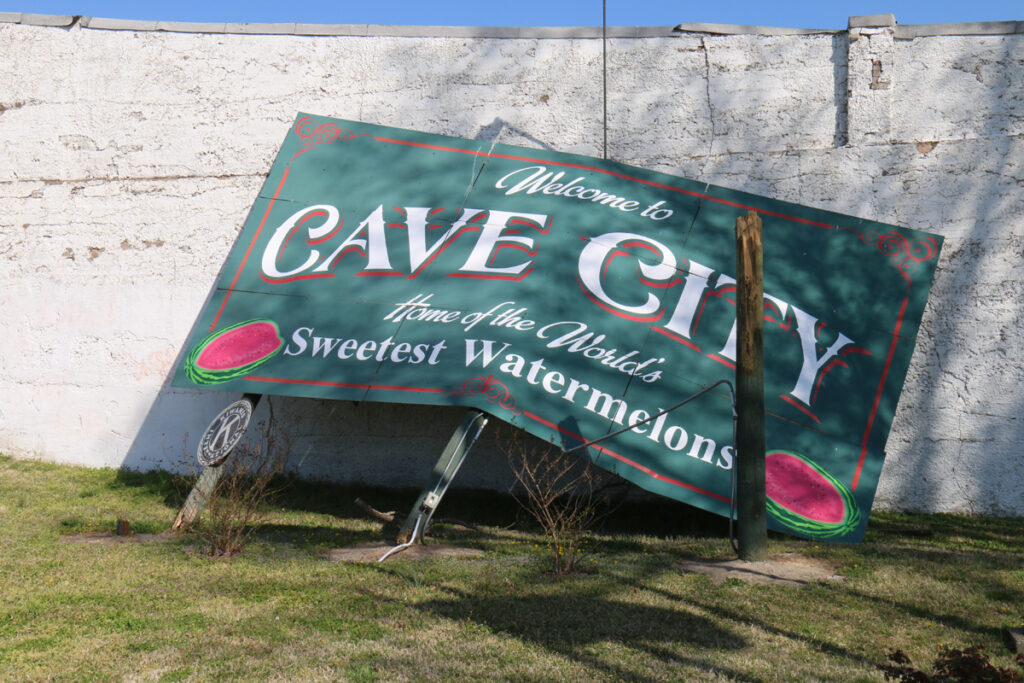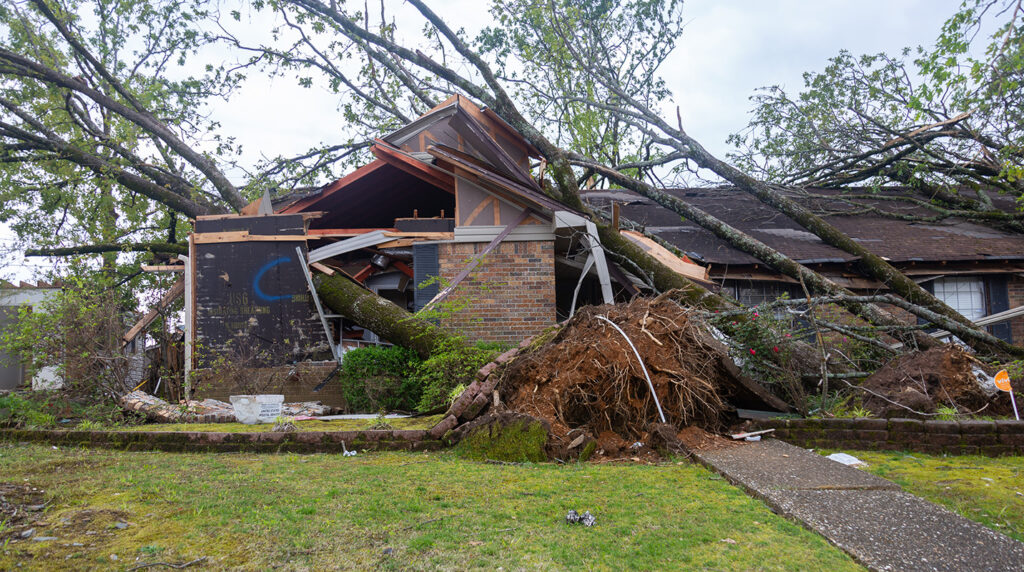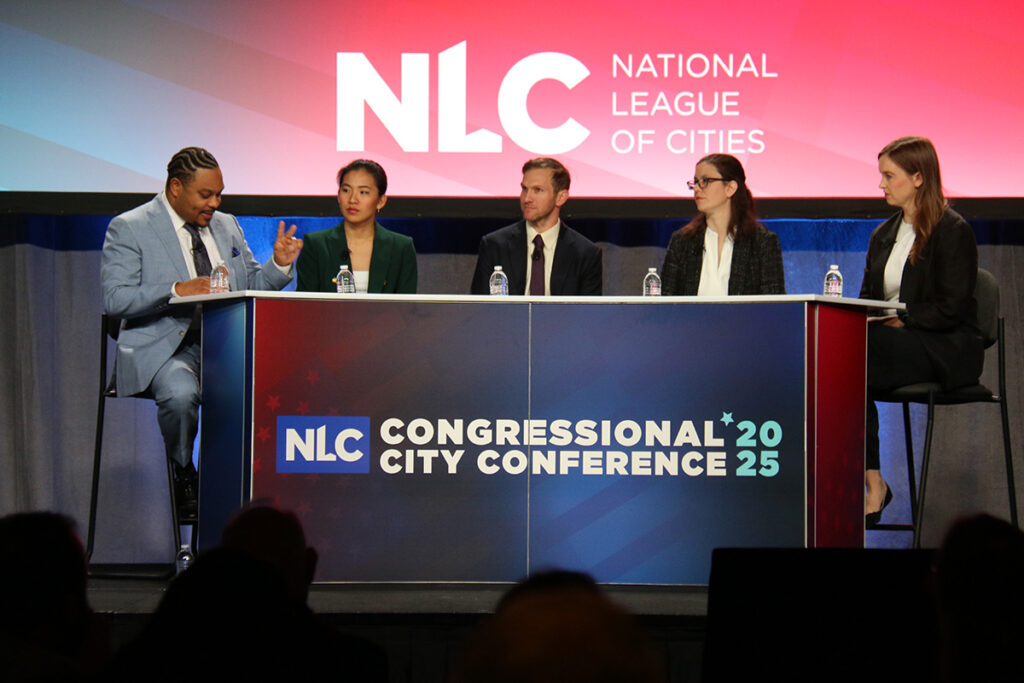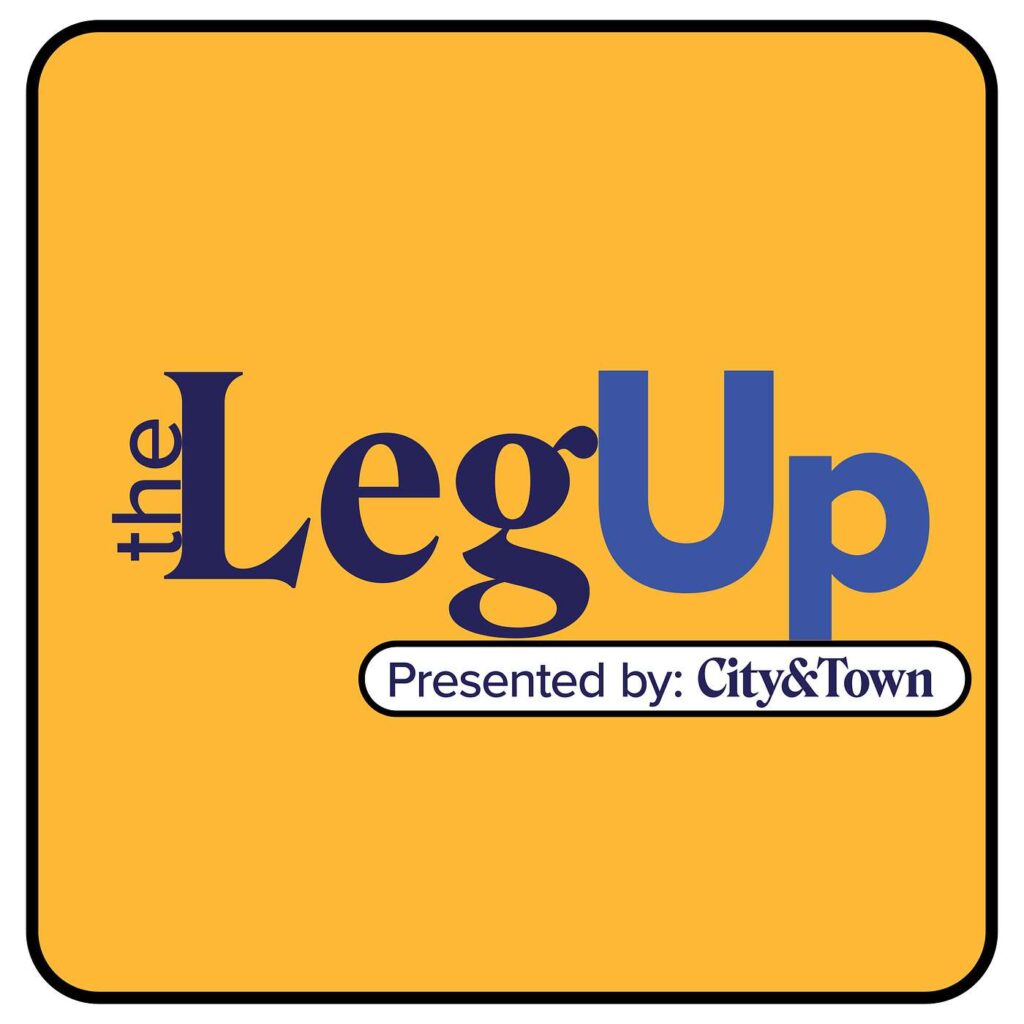In the heart of downtown Springdale, a transformative project has reshaped the urban landscape, blending connectivity, open space and recreation. The Mile 16 project represents a significant benchmark in the city’s ongoing efforts to revitalize its downtown and promote sustainable urban development.
The primary objective of the Mile 16 project was to realign the multiple 90-degree bends along the Razorback Greenway Trail as it traversed downtown Springdale, particularly at the crossing of Emma Avenue. The innovative design solution not only addressed horizontal alignment, but also vertical alignment by elevating the trail above an adjacent box culvert, which previously served as part of the trail’s route. This adjustment resulted in a gentler slope as the trail met Emma Avenue, while also allowing for adequate soil depth to support the growth of trees in the adjacent green spaces.
A defining feature of the design is the incorporation of raised planters emerging from the landscape. These planters, adorned with concrete walls etched to resemble the rolling hills of the Ozark Mountains, serve as both functional elements and aesthetic focal points. Plaza spaces adjoining the iconic Mile 16 sign and Emma Avenue further enhance the visual appeal of the area, providing residents and visitors with inviting gathering spaces.
At the center of the realigned trail lies the park’s namesake: the illuminated Mile 16 sign. Serving as both a milestone and a popular photo opportunity, it symbolizes the 16th mile of the Razorback Greenway Trail. The surrounding plaza provides a space to pause, inviting visitors to capture memories of their time in Springdale.
One challenge encountered during the project was devising a solution for the added weight placed atop the box culvert as a result of the new trail and park elements. To address this issue, techniques commonly used in green roof construction for buildings were employed. Special lightweight soil mixes were utilized, and measures were taken to ensure adequate drainage, reducing the additional weight placed on the culvert while still providing optimal conditions for plant growth.
In addition to the trail realignment, the Mile 16 project included significant enhancements to Emma Avenue between Spring Street and Holcomb Street. These improvements aimed to create a more pedestrian-friendly environment while also improving traffic flow and safety. The road was narrowed to control speed, and the expansion of the sidewalks on the north side of the road allowed for the creation of seating and conversation areas, landscape beds, trees and bioretention basins.
A key objective of the street improvements was to facilitate the easy closure of the block between Spring and Holcomb streets for events. This was achieved through the installation of retractable bollards at intersections, which can be easily deployed by city employees. The ability to convert Emma Avenue into a pedestrian-only space during events not only enhances safety but also fosters a vibrant and inclusive community atmosphere.
The Mile 16 project has had a significant impact on the Springdale community, contributing to increased connectivity, pedestrian safety and economic vitality. By creating attractive and accessible public spaces, the project has helped to bring people downtown, supporting local businesses and strengthening community ties.
The project not only enhances connectivity within downtown Springdale but also provides a seamless transition between the adjacent Shiloh Square and Turnbow Park. It further provides a gateway from downtown to the newly renovated Luther George Park. This connection creates a network of green spaces, fostering community engagement and encouraging residents to explore the beauty of their city.
The total cost of construction was close to $4.5 million. Funding was provided in part by the Walton Family Foundation through their Design Excellence Grant program. In addition to the aesthetic and connectivity enhancements, the project also provided an opportunity to improve the city’s infrastructure by upgrading the existing water line underneath Emma Avenue.
The Mile 16 project represents a shining example of successful urban revitalization, blending innovative design with community engagement to create a more livable and sustainable city. As Springdale continues to evolve, projects like Mile 16 will play a crucial role in shaping the city’s future, promoting economic growth and enhancing the quality of life for residents and visitors alike. Mile 16 stands as a beacon of progress and community pride, welcoming all to experience the beauty and vibrancy of downtown Springdale.
Chris Bakunas, PLA, is a professional landscape architect and interim Land Development department head. He works out of our Fayetteville office. Contact Chris by email at [email protected].









